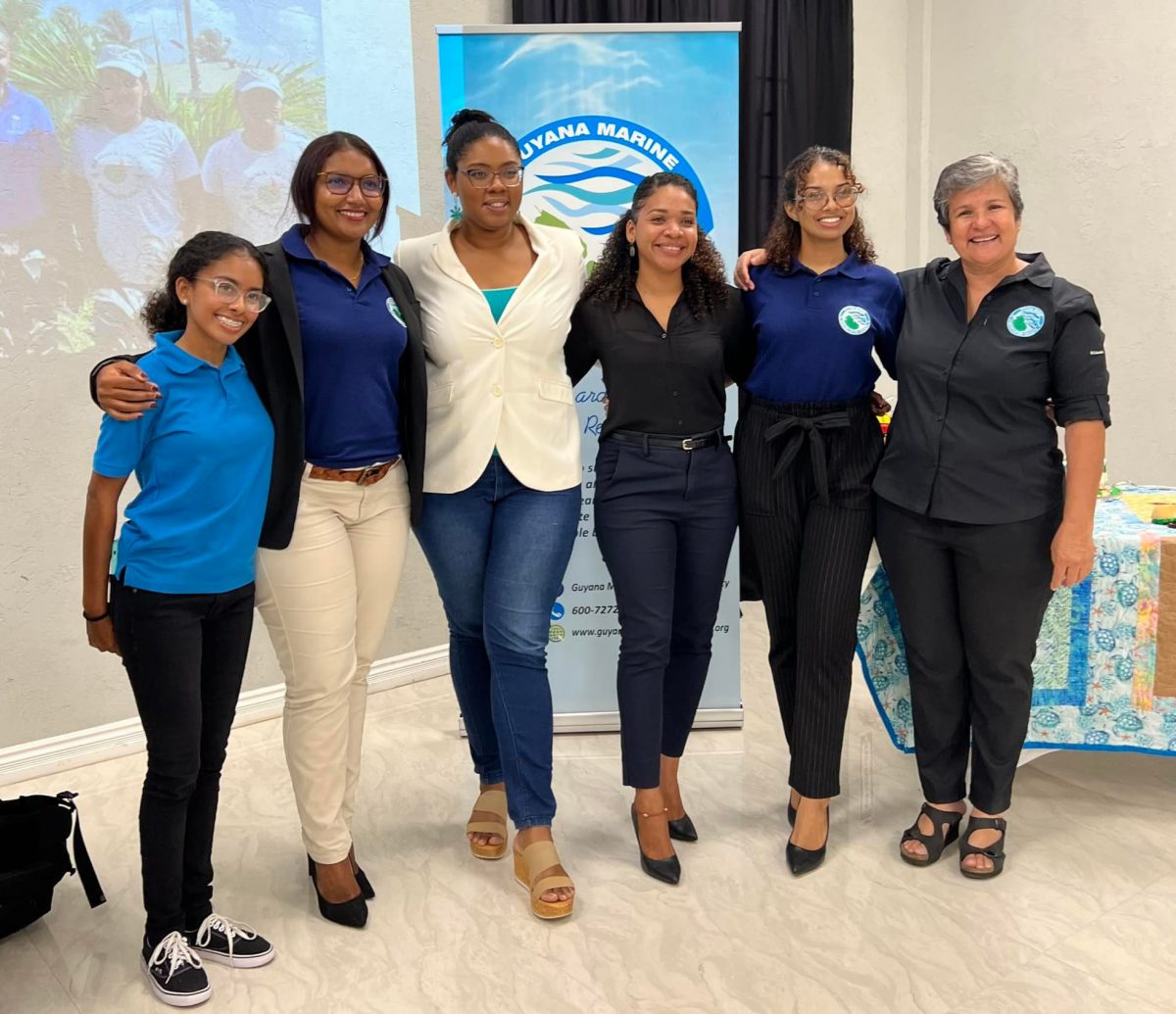The Guyana Marine Conservation Society (GMCS) has launched its five-year strategic plan (2022-2027), which it says aligns with the government’s Low Carbon Development Strategy (LCDS) 2030.
According to a Department of Public Information (DPI) release, at the launch on Wednesday at Duke Lodge, Georgetown, the GMCS’s founder, Annette Arjoon–Martins, said that over the next five years the organisation will focus on four main areas: research and monitoring; education and awareness; community development; and strengthening GMCS’s organizational capacity.
She also related how the GMCS strategic plan is linked to the Ocean Economy component of the LCDS 2030.
“The whole reason for redoing our strategic plan when the Low Carbon Development Strategy was launched, is to ensure that our work, going forward, is closely aligned to it. This will expedite what we have to do, and we are there with them (the LCDS team) step by step. We are not working with two different maps that will take us to one location. We have one road map which we can use to get to the location faster,” Arjoon–Martinswas quoted as saying.
The GMCS began as the Guyana Marine Turtle Conservation Society in the 1980s and worked with Indigenous communities to conserve the nesting habitats of four endangered sea turtles along the shores of what is now the Shell Beach Protected Area. In 2000, the Society was formally established as a non-governmental organization under the Friendly’ Society’s Act. Recognising Guyana’s growing marine and coastal conservation needs, in 2014 it expanded its mandate from its primary focus on sea turtle conservation, to other important marine species, their habitats and wider marine and coastal ecosystems
Senior Director for Climate and REDD+ at the Ministry of Natural Resources, Pradeepa Bholanath congratulated the society on the forging of its plan and highlighted that it is “blazing the trail in many aspects of the LCDS,” since it presents an early implementation of one of the LCDS’s key priorities.
“Protecting marine life and coastal ecosystems is vital for holistic low-carbon development. This will be done by examining the ecosystems of the coastal and marine environment through marine spatial management and improving the capacity and knowledge of key stakeholders in these areas. Guyana will develop as part of this, a Marine Spatial Plan to promote the establishment of marine protected areas,” Bholanath explained in her presentation.
Bholanath went on to remind the gathering that Guyana is creating a vision for a highly-diversified blue economy with innovative, value-generating maritime clusters, thriving coastal communities and protected flourishing natural resources.
The release said the five-year plan and the LCDS 2030 are aligned in three critical areas: marine plans and policies; the protection of marine life and coastal ecosystems; as well as the support for the sustainable use of marine and coastal resources. The marine society intends to achieve these through:
● Making its research and monitoring data on coastal dynamics and biodiversity available to relevant stakeholders and regulatory agencies. This will be done to support the development of data-guided policies relating to Guyana’s coastal and marine ecosystems;
● Engaging stakeholders to increase their understanding of policies that promote a healthy marine and coastal ecosystem;
● Establishing partnerships and supporting the marine planning process and the implementation of marine and coastal policies;
● Conducting and supporting research to increasingly understand the status of marine coastal resources such as mangroves and mangrove-related biodiversity and their threats;
● Engaging with and increasing awareness to coastal communities on the value and sustainable use of marine and coastal resources, as well as;
● Building capacity in the coastal communities for the sustainable use and management of marine and coastal resources.
Combined with the LCDS, the release said, the strategic plan will restore and strengthen marine ecosystems, support the diversification of Guyana’s economy and energy transition, as well as provide food security and resilient livelihoods and enhance coastal infrastructure.





